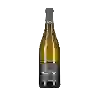
Domaine Beau MistralTentation Rosé
In the mouth this pink wine is a with a nice freshness.
This wine generally goes well with vegetarian, appetizers and snacks or lean fish.
Taste structure of the Tentation Rosé from the Domaine Beau Mistral
Light | Bold | |
Dry | Sweet | |
Soft | Acidic |
In the mouth the Tentation Rosé of Domaine Beau Mistral in the region of Méditerranée is a with a nice freshness.
Food and wine pairings with Tentation Rosé
Pairings that work perfectly with Tentation Rosé
Original food and wine pairings with Tentation Rosé
The Tentation Rosé of Domaine Beau Mistral matches generally quite well with dishes of pasta, vegetarian or appetizers and snacks such as recipes of pasta with avocado, light tuna-tomato quiche (without cream) or roasted pumpkin seeds.
Details and technical informations about Domaine Beau Mistral's Tentation Rosé.
Discover the grape variety: Noir Fleurien
Noir Fleurien noir is a grape variety that originated in France (Auvergne). It produces a variety of grape specially used for wine making. It is rare to find this grape to eat on our tables. The Noir Fleurien noir can be found in several vineyards: South-West, Cognac, Bordeaux, Loire Valley, Provence & Corsica, Rhone Valley, Savoie & Bugey, Beaujolais.
Informations about the Domaine Beau Mistral
The Domaine Beau Mistral is one of of the world's great estates. It offers 26 wines for sale in the of Vaucluse to come and discover on site or to buy online.
The wine region of Vaucluse
The wine region of Vaucluse is located in the region of Méditerranée of Vin de Pays of France. Wineries and vineyards like the Domaine Chêne Bleu or the Domaine Chêne Bleu produce mainly wines red, white and pink. The most planted grape varieties in the region of Vaucluse are Viognier, Merlot and Cabernet-Sauvignon, they are then used in wines in blends or as a single variety. On the nose of Vaucluse often reveals types of flavors of earthy, blueberry or dried herbs and sometimes also flavors of savory, anise or cinnamon.
The wine region of Méditerranée
Méditérranée is a PGI title that covers wines produced in a large area of the South-eastern coast of France, roughly corresponding to the wine region of Provence but also including Part of the Rhône Valley. The PGI shares its territory with multiple AOC appellations as varied as Châteauneuf-du-Pape, Bandol and Côtes de Provence. The PGI Méditérranée catchment area extends over 10 departments (including the two on the island of Corsica), as well as smaller parts of the Isère, Loire and Rhône departments. Viticulture is essential to the culture and economy of this part of France.
The word of the wine: Herbaceous
Vegetable odour reminiscent of freshly cut grass and considered a defect of the wine.














